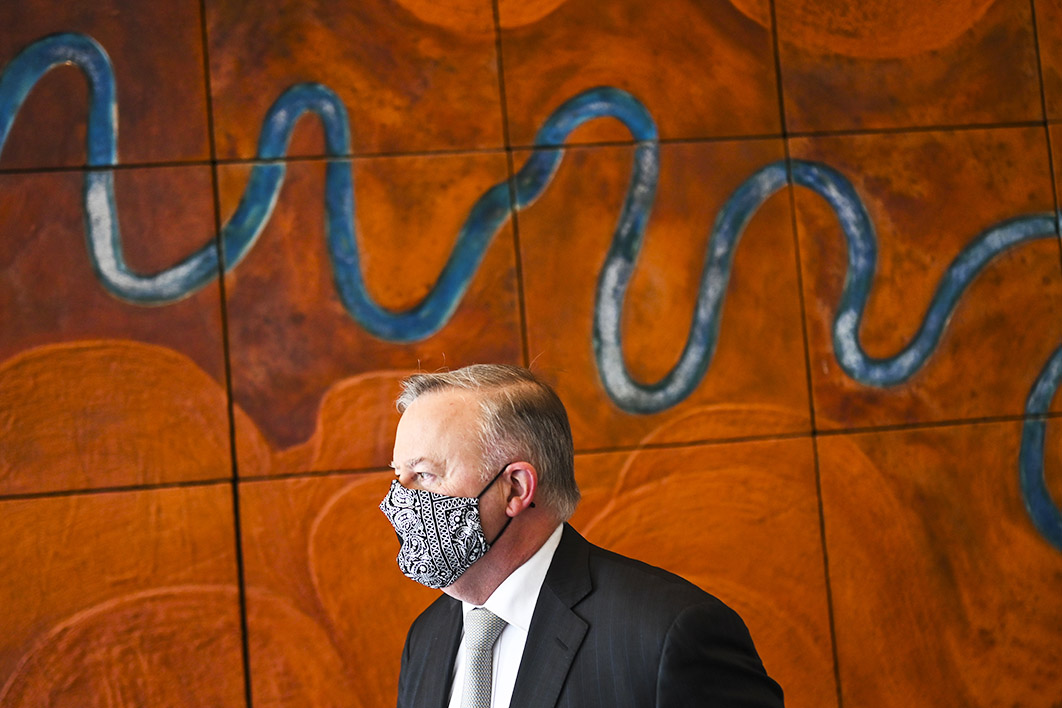“PM bounces back as voters desert Labor,” announced the Australian’s Monday headline for its Newspoll report. “A two-point rise in the primary vote has given the Coalition a two-party-preferred lead as Labor sinks to historical lows” was the paper’s summary.
“Historical,” you say?
The article itself, by Simon Benson, is a little less assertive, reporting a 2 per cent first-preference Coalition increase from a fortnight ago and a “corresponding fall for Labor, which has returned to near-historical lows of 34 per cent.”
In Newspoll terms there’s nothing historical about it; the Gillard government of 2010–13 often registered primary-vote numbers less than 30 per cent, bottoming at 27.
But in the context of actual election results the Australian is on safer ground. A 34 per cent primary vote would be, well, historically very low, although an improvement on the 33.3 per cent Labor got at last year’s election.
Still, there’s no getting around the fact that 34 per cent is a small proportion of the electorate. Past Labor leaders, successful or otherwise, would find it hard to believe the party could sink so low.
Can Labor win with 34 per cent? Not if the Coalition is on (as this Newspoll has it) 43, the Greens are on 12 and One Nation is 3. It would probably lose with about 49 per cent of the two-party-preferred vote, which happens to be Newspoll’s estimate. But if the previous fortnight’s Newspoll was replicated at the ballot box — 36 per cent for Labor versus 41 for the Coalition — Labor would get a two-party-preferred vote of about 51 per cent in today’s climate, which is usually enough for victory.
It’s the “c” in “compulsory preferential voting” that keeps Labor competitive at the federal level. If it were an “o” for optional (like in New South Wales) you could shift another 1 or 2 per cent (more like 2) from Labor’s two-party-preferred column into the Coalition’s.
Way back in the decade before last, Labor “sources” seeking to undermine their leader — those who denigrated Simon Crean because they wanted a return to Kim Beazley, and then those among the Crean/Gillard forces getting their own back against Bomber — would confide to journalists that “it,” the Labor primary vote, “needs a four in front of it” if the party is to be at all competitive. (Usually this would be prefaced by “mate,” because it is written somewhere that this is the preferred mode of address of party apparatchiks when dealing with our fourth estate.)
Then Labor won a slender two-party-preferred majority in 2010, with 38 per cent of the primary vote. (That involved overhauling a five-point primary-vote deficit with preferences, mostly from the Greens. It was only the second federal election at which the primary-vote loser won the two-party-preferred vote; the other was the Hawke government’s second re-election in 1987.)
So for the last ten years it’s been “(mate,) it needs to be in the high thirties.” But the truth, in our voting system, is that neither side’s primary vote means much in isolation; the result depends on what the other side gets, and what the minor parties and independents receive and where their preferences flow. One of Labor’s worst results ever, the landslide after the 1975 dismissal, came off a 42.8 per cent primary vote, which the party would have killed for at any election over the past decade. (Preferences in 1975 barely improved it, to an estimated 44.3.)
It is little noted that in 2019 the Coalition’s 41.4 per cent was its second-lowest primary vote since the second world war and the creation of the Liberal Party. Its lowest was in 1998, which those with long memories will recall the Howard government survived despite losing the national two-party-preferred vote by a Trumpish 2 per cent.
You get the picture: it’s two-party-preferred votes that count, not primary ones.
Still, there’s no getting around the fact that Australia’s oldest political party attracts barely a third of the national primary vote. Is it on the way out? You bet it is. So are the Liberals and Nationals. It’s not if, but when.
In the meantime, there are still elections to contest and two-party-preferred majorities to aim for. •





